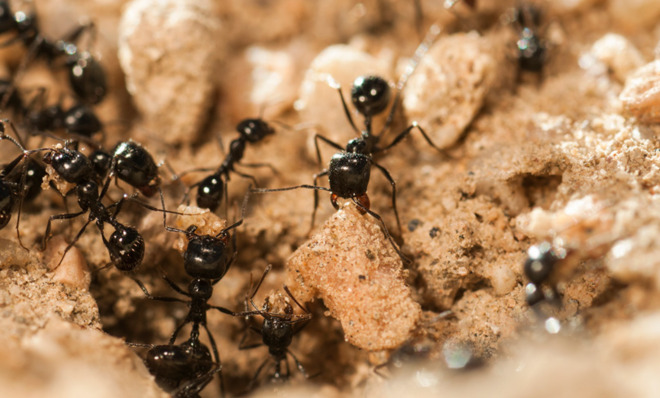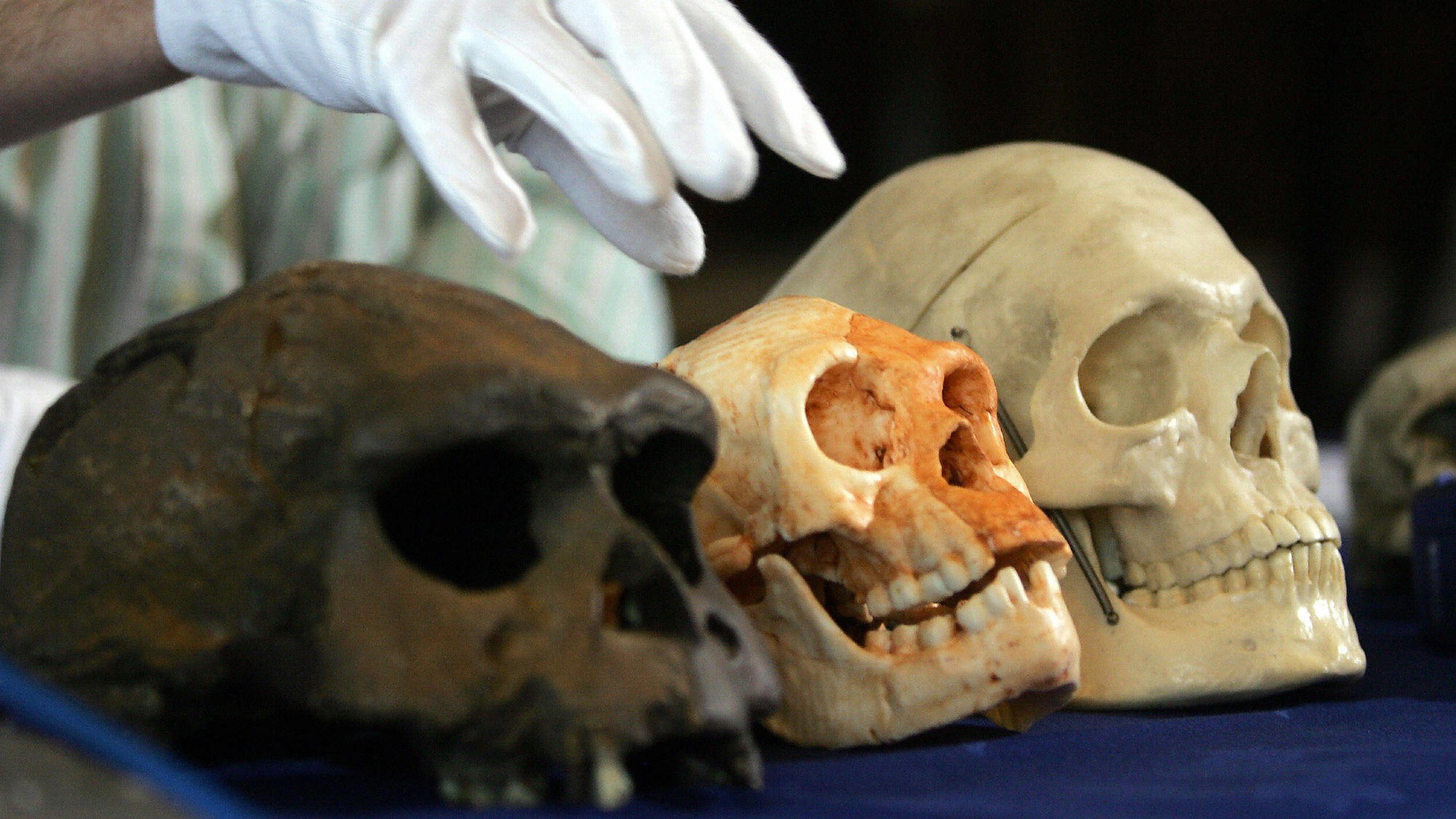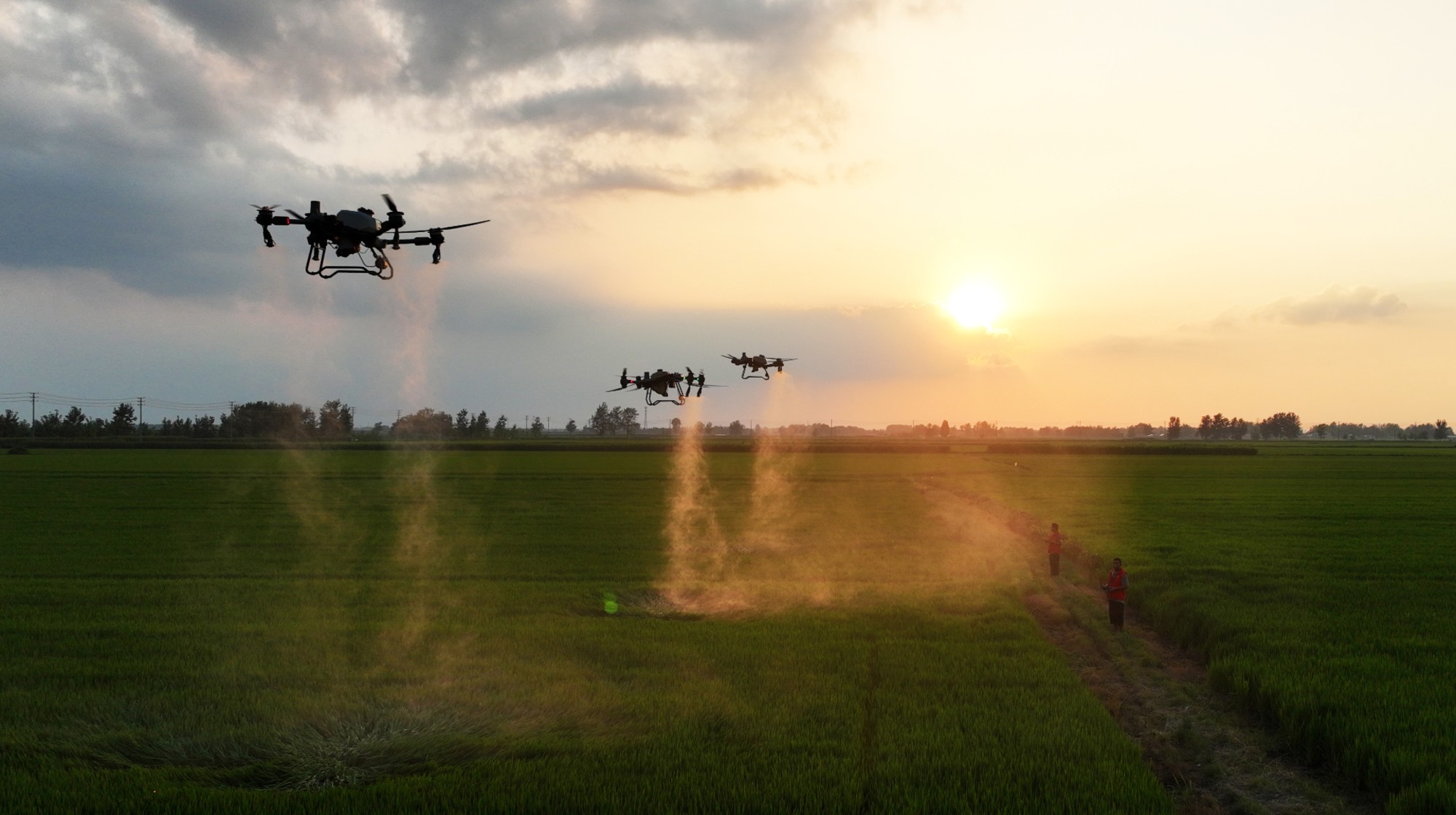How ants use 'death signals' to scavenge for food
European biologists have finally found the cause of ants' uncanny ability to locate far-flung meals

The desert ant Cataglyphis fortis doesn't have it easy when it comes to grabbing a bite to eat.
The ants live as scavengers, picking what they can from dead insects and arachnids on the punishing salt pans (a flat area of desert covered with salt and minerals) of the Sahara Desert. Their meals are scattered, unpredictably, in both space and time, and finding them before the desert heat becomes too much to bear seems challenging. But the ants are able find their meals quickly and dash home as soon as they've found one. Now European biologists have figured out how ants are able to find their far-flung meals: with a good nose and a little strategy.
The researchers, led by behavioral biologist Markus Knaden and his PhD student Cornelia Buehlmann from Germany's Max Planck Institute for Chemical Ecology, spent two summers tracking ants on the salt pans of Tunisia as they left their nests in search of food. There was no way to put a tracking device directly on the ants, so the scientists had to accompany them on their foraging trips. "What we usually do is, we follow a foraging ant and hold a handheld GPS to track ourselves," Knaden says. "The ants don't seem to be disturbed as long as one keeps a distance of about two meters."
The Week
Escape your echo chamber. Get the facts behind the news, plus analysis from multiple perspectives.

Sign up for The Week's Free Newsletters
From our morning news briefing to a weekly Good News Newsletter, get the best of The Week delivered directly to your inbox.
From our morning news briefing to a weekly Good News Newsletter, get the best of The Week delivered directly to your inbox.
The team scattered dead insects around the salt pans, as far as 100 meters from the ants' nests, to see how far the insects would travel and how long it took them to find the food.
During their treks into the pans, the ants covered distances of anywhere from 32 to 1,238 meters (farther than any run recorded before). They found the bait in less than 15 minutes, and in less than four minutes on average. They only approached the food after passing it downwind and running into a plume of odor molecules that had been carried from the food. If they passed the food while upwind of it, they paid it no mind, even when they were just a few centimeters away. That suggests that ants' ability to find food so quickly is based entirely on smell.
To find out more about the scent-based tracking, the researchers placed dead insects upwind from the ants at different distances. Most of the ants could pick up a scent that was 3.3 meters away, and some of them could detect it as far as 5.9 meters. Considering how far the ants walk, their ability to smell over distances of several meters and the strong, steady winds that blow across the salt pans, Knaden estimates that the ants screen an area of about 1,500 square meters during their food runs.
"Scaling that up to our size, we would have to screen an area of about 150,000 square meters, or about 20 soccer fields, for a piece of bread," he says.
A free daily email with the biggest news stories of the day – and the best features from TheWeek.com
The researchers then tried to attract a group of ants again with either whole dead insects or one of 15 different odorous compounds that they're known to release, to see which ones the ants were using to locate their food. The ants were most attracted to the scent of linoleic acid, a fatty acid that's known as a necromone among biologists because it acts as a "death signal" for bugs.
When some social insects detect these odors, they'll remove dead nestmates from their colonies to prevent the spread of diseases. Other insects, like cockroaches, will steer clear of areas that "smell like death" to avoid traps, poison, and predators. The desert ants don't treat these odors as a warning, but as an invitation — a sure sign that there's a corpse to be scavenged. Of the 50 ants that the researchers tested like this, all but two immediately turned and headed towards the linoleic acid once they caught a whiff.
The ants don't rely on just a strong scent and dumb luck, though. There's a method to the way they move around the desert. While some other insects that find food and mates by smell pay no attention to which way the wind is blowing, the researchers found that the tracked ants spent most of their time walking crosswind — moving east-west when the wind is blowing south, for example — and turning upwind when they caught a scent.
"By running perpendicular to the wind direction, you maximize the chance of detecting food items that lay around in a random pattern," Knaden says. Moving like this makes the ants' foraging trips more efficient and reduces the amount of time they spend wandering in the harsh desert.
"You can put a tiny dead insect hundreds of meters into the salt pan and there will always appear from nowhere an ant that picks it up," Knaden says. "Every single step the ants take seems to be well planned to maximize their efficiency."
Once an ant finds a meal and heads back to the nest with it, the siren scent of the necromones doesn't appear to have much pull. When the researchers tried to use linoleic acid to attract ants returning home with food, the ants with a large piece of food ignored it while ants with smaller items checked the smell out. It isn't clear if this is because these ants made a decision to follow the scent based on the value of the food they were carrying, or because the smell from larger pieces of food simply mask the linoleic acid more than the smaller ones and keeps the ant focused on getting home for dinner.
-
 Homo Floresiensis: Earth’s real life ‘hobbits’
Homo Floresiensis: Earth’s real life ‘hobbits’Under the Radar New research suggests that ‘early human pioneers’ in Australia interbred with archaic species of hobbits at least 60,000 years ago
-
 Homes by renowned architects
Homes by renowned architectsFeature Featuring a Leonard Willeke Tudor Revival in Detroit and modern John Storyk design in Woodstock
-
 Looming drone ban has farmers and farm-state Republicans anxious
Looming drone ban has farmers and farm-state Republicans anxiousIN THE SPOTLIGHT As congressional China-hawks work to limit commercial drone sales from Beijing, a growing number of conservative lawmakers are sounding an agricultural alarm